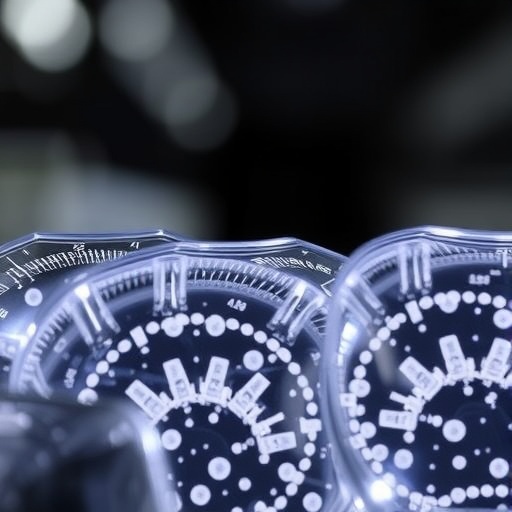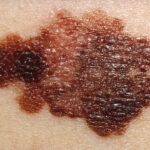
In a groundbreaking study recently published in Nature Communications, a team of researchers led by Li, Y., Fang, J., and Ding, Y. have elucidated a novel molecular mechanism by which the β-propeller protein-associated neurodegeneration (BPAN) protein WDR45 orchestrates the disassembly of stress granules through phase separation with the RNA-binding protein Caprin-1. This remarkable discovery not only sheds light on the intricate cellular processes that govern stress responses but also unveils potential therapeutic avenues for neurodegenerative disorders linked to protein homeostasis dysfunction.
Stress granules are dynamic, membraneless organelles that transiently form in response to various cellular stressors such as oxidative stress, heat shock, and viral infections. These ribonucleoprotein aggregates serve as critical hubs for the sequestration and triage of untranslated mRNAs and associated proteins, effectively modulating gene expression and maintaining proteostasis under adverse conditions. Dysregulation of stress granule dynamics has been implicated in the pathogenesis of numerous neurodegenerative diseases, including amyotrophic lateral sclerosis (ALS), frontotemporal dementia (FTD), and BPAN, which is characterized by mutations in the WDR45 gene.
The protein WDR45 belongs to the WD-repeat protein family and features a distinctive β-propeller structural motif that facilitates protein-protein interactions and scaffolding functions within the cell. Mutation-induced dysfunctions in WDR45 have been previously shown to disrupt autophagic flux and mitochondrial homeostasis, linking WDR45 defects to neurodegeneration. However, the molecular underpinnings governing WDR45’s role in stress granule biology remained largely unexplored until this pioneering work.
.adsslot_S0fHdwCb3J{width:728px !important;height:90px !important;}
@media(max-width:1199px){ .adsslot_S0fHdwCb3J{width:468px !important;height:60px !important;}
}
@media(max-width:767px){ .adsslot_S0fHdwCb3J{width:320px !important;height:50px !important;}
}
ADVERTISEMENT
Li and colleagues employed an integrative approach combining biochemical assays, advanced imaging techniques, and phase separation experiments to dissect how WDR45 influences stress granule turnover. Their data compellingly demonstrate that WDR45 participates directly in stress granule disassembly by engaging in liquid-liquid phase separation (LLPS) with Caprin-1, a well-established RNA-binding protein and stress granule nucleator. This WDR45-Caprin-1 interaction facilitates the formation of a dynamic biomolecular condensate that destabilizes stress granules, promoting the release of sequestered mRNAs and proteins and thereby restoring normal cellular homeostasis.
Phase separation has emerged in recent years as a fundamental mechanism by which cells organize their internal milieu without membrane-bound compartments. Through LLPS, proteins and nucleic acids can coalesce into concentrated assemblies, enabling rapid and reversible compartmentalization. The ability of WDR45 to partake in such phase transitions in collaboration with Caprin-1 suggests a previously unrecognized layer of regulation in stress granule dynamics and highlights phase separation as a critical coordinator of neuroprotective pathways.
Intriguingly, the study further reveals that disease-associated mutations in WDR45 impair its propensity for phase separation and interaction with Caprin-1, resulting in defective stress granule clearance. Using point mutations identified in BPAN patients, the researchers showed that mutant WDR45 proteins form aberrant aggregates rather than dynamic condensates, thereby trapping stress granules and exacerbating cellular stress. These findings provide a direct molecular link between WDR45’s phase separation capability and the pathological accumulation of stress granules observed in neurodegenerative diseases.
Advanced super-resolution microscopy allowed the team to visualize the spatial-temporal dynamics of WDR45 and Caprin-1 within live cells undergoing stress. The data uncovered that WDR45 localizes transiently to the periphery of Caprin-1-enriched stress granules, likely acting as a molecular buffer to facilitate granule disassembly. This nuanced localization pattern underscores the functional specificity by which WDR45 contributes to stress granule resolution and distinguishes it from other canonical autophagic adaptor proteins.
Beyond the mechanistic insights, the implications of this work extend to potential therapeutic interventions. The modulation of phase separation properties of WDR45 or stabilization of its interaction with Caprin-1 could be harnessed to enhance stress granule clearance in the context of neurodegeneration. Small molecules or biologics aimed at restoring WDR45’s normal function may mitigate the cytotoxic accumulation of stress granules and ameliorate disease progression in BPAN and related disorders.
The study also raises intriguing questions about the broader role of phase separation in the orchestration of cellular proteostasis networks. It remains to be determined whether WDR45 participates in similar condensate dynamics in other cellular pathways or interacts with additional RNA-binding proteins involved in stress responses. Further investigations into the biophysical principles governing WDR45-mediated condensate formation could unveil novel regulatory mechanisms relevant across diverse neurodegenerative conditions.
Moreover, the discovery that WDR45 mutations disrupt phase separation dynamics prompts reconsideration of how protein mutations contribute to disease beyond mere loss of function. Aberrant phase separation and the resultant dysregulated condensates appear increasingly recognized as a pathogenic theme in neurodegeneration, opening new avenues for diagnostics and targeted therapies centered on biophysical properties of proteins.
The extensive use of cutting-edge biophysical methods—ranging from fluorescence recovery after photobleaching (FRAP) to in vitro droplet assays—lent robust support to the conclusions of this study. This comprehensive toolkit allowed the authors to capture phase separation behaviors at molecular resolution and link structural perturbations in WDR45 to functional deficits in stress granule disassembly.
Importantly, the cross-disciplinary collaboration underlying this research, spanning molecular biology, biophysics, and neurobiology, exemplifies the power of integrative science to uncover novel disease mechanisms. By bridging fundamental protein chemistry with cellular pathophysiology, the study advances our understanding of how subtle alterations in protein properties can precipitate complex neurodegenerative syndromes.
Looking forward, this work sets the stage for exploring phase separation-targeted pharmacology as a promising avenue for treating BPAN and potentially other protein aggregation disorders. It also calls for expanded genetic screening of neurodegenerative patients focusing on proteins implicated in condensate biology, which may reveal additional players akin to WDR45 with therapeutic relevance.
This landmark investigation illuminates the delicate balance cells must maintain to navigate stress and preserve functional proteomes. By unveiling WDR45 as a pivotal regulator of stress granule dynamics via phase separation with Caprin-1, Li and colleagues have charted a compelling narrative that transforms our understanding of neurodegeneration and opens fresh horizons for scientific inquiry and clinical innovation.
Subject of Research: β-Propeller protein-associated neurodegeneration protein WDR45’s role in stress granule disassembly via phase separation with Caprin-1
Article Title: β-propeller protein-associated neurodegeneration protein WDR45 regulates stress granule disassembly via phase separation with Caprin-1
Article References:
Li, Y., Fang, J., Ding, Y. et al. β-propeller protein-associated neurodegeneration protein WDR45 regulates stress granule disassembly via phase separation with Caprin-1. Nat Commun 16, 5227 (2025). https://doi.org/10.1038/s41467-025-60583-x
Image Credits: AI Generated
Tags: amyotrophic lateral sclerosis mechanismscellular stress response pathwaysfrontotemporal dementia pathogenesisNeurodegenerative disease researchphase separation mechanismspotential therapeutic strategiesprotein homeostasis disordersribonucleoprotein aggregate regulationRNA-binding protein interactionsstress granule dynamicsWDR45 protein functionβ-propeller protein structure



